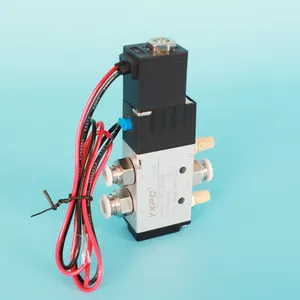
3V1-06 1/8in Normally Closed Electromagnetic Manifold Base Mini Air Valve Group 24v 3 Way Solenoid Manifold Valve


NPT BSP G AC DC 24v 110v 220v 380v Air Push Connectors Leading Wire 12v 1/4 Single 5 Way Solenoid Pneumatic Valve























Bidirectional solenoid valves are essential components in various fluid control systems, offering precise control over the flow direction and fluid consistency. These valves are electromechanically operated devices that manage the flow of a substance from two directions. They are widely utilized in applications requiring the reversal of flow or the need to stop and allow flow in either direction.
The versatility of bidirectional solenoid valves is evident in their various types and configurations, catering to a broad spectrum of industrial requirements. These include direct-acting valves, which are suitable for smaller flow rates, and pilot-operated valves, which are used for larger flow applications. The choice of valve depends on factors such as flow rate, valve response time, and the nature of the fluid being controlled.
The application of bidirectional solenoid valves spans across numerous industries. They are integral in water treatment plants for regulating water flow, in manufacturing for controlling pneumatic and hydraulic systems, and in HVAC systems for managing refrigerants. Their bidirectional nature makes them a flexible solution for systems requiring dual flow direction control.
The construction materials of bidirectional solenoid valves are selected based on the fluid type and application environment. Common materials include brass, stainless steel, and plastic, each offering distinct advantages in terms of durability and chemical compatibility. The design of these valves often incorporates features such as manual overrides, visual indicators, and various seal materials to enhance performance and longevity.
The advantages of using bidirectional solenoid valves are numerous. They provide reliable and efficient flow control in both directions, which is crucial for systems that require a reversible flow path. Their quick response time and low power consumption make them an energy-efficient choice for many automated systems. Additionally, the compact design of these valves allows for easy integration into existing systems without requiring significant modifications.
When selecting a bidirectional solenoid valve, it is important to consider factors such as the operating pressure range, the temperature of the working environment, and the type of fluid being controlled. It is also crucial to ensure that the valve's specifications match the system's requirements to achieve optimal performance and reliability.